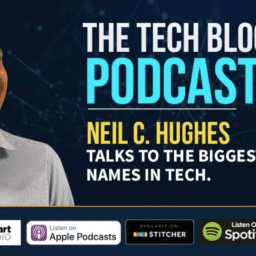Few things are more discouraging to an HR professional than recruiting and onboarding the “perfect hire,” only to learn that the candidate was not a good fit after all. Frustration aside, hiring the wrong candidate is costly to companies. In fact, according to a recent survey, 66% of businesses estimate that each bad hire comes at a cost of at least $25,000 in wasted time, productivity, and company resources.
The good news is that modern staffing and recruiting best practices are becoming more adept at identifying the right candidates and weeding out the wrong ones. Here are five of the latest trends to help recruit qualified professionals who will add value instead of creating unnecessary cost.
1. Employer branding and positioning
In today’s candidate-driven market, employers are often competing against each other to attract the right talent. The reputation or brand that an organization presents to the public has never been more important. 84% of job seekers report that they consider the reputation of a company or brand as part of their decision before accepting or declining a job.
The ultimate goal is to present the organization as a “destination workplace” to candidates throughout the recruiting process, both in-person and online. Pay careful attention to employee review sites and social media platforms. Respond honestly and in a timely manner. Even a negative review can paint a company in a positive light if the response is transparent, polite, and proactive.
Employee referral programs are another simple way to showcase the desirability of a brand or workplace. When current employees share open roles on networking sites and actively recruit qualified candidates, it adds credibility in the eyes of the job seeker and fosters pride and investment in the company in the mind of the employee.
2. Inbound talent marketing
Inbound talent marketing is one of the top trends for HR organizations of all industries. Its primary goal is to attract and engage with potential candidates, persuade them to apply for open positions, and add them to the overall pool of talent.
Modern recruiting is very similar to marketing. It isn’t enough to post a job description and wait for applicants to find and reply to it. Instead, inbound talent marketing solutions provide interactive job boards, social and email marketing capabilities, and customized forms and applications to actively pursue qualified professionals and convert them to applicants.
The ultimate goal is to fill open roles with the right candidates, but inbound talent marketing has a second benefit; even if a candidate isn’t selected for the original role for which they were recruited, it adds them to the talent database for future recruitment efforts.
3. Social recruiting
79% of job applicants use social media in their search for their next position. It makes perfect sense to meet candidates where they’re already searching.
Social recruiting, which is often used in combination with inbound talent marketing, is the usage of social media as a recruiting and employer branding platform. It extends beyond traditional platforms like LinkedIn and Twitter to include HR-driven blogs and interaction on employee review sites and job boards.
By developing relationships with potential candidates over time, staffing professionals deepen their talent pool and create access to a broader network of talent.
4. Collaborative hiring
Collaborative hiring is a relatively new recruiting practice, in which the HR team collaborates with other departments and stakeholders to identify, recruit, and hire qualified talent. In addition to easing the workload of recruiting teams, collaborative hiring offers other notable benefits to both the organization and the candidate.
It allows the candidate to gain a better understanding of the company culture and the teams with which they would interact. It usually involves interviews with a diverse cross-section of the company population. The resulting transparency ensures buy-in from both the organization and the applicant before an offer is made, decreasing the likelihood of turnover.
5. AI-enabled recruiting
More companies than ever before are turning to artificial intelligence to enhance their staffing and recruiting efforts. Whether it’s creating a bot to answer commonly asked questions from job applicants or using search algorithms to seek out qualified candidates online, AI continues to change the way HR teams find, recruit, and retain talent.
As new technology continues to emerge, and the market becomes increasingly candidate-driven, organizations must stay abreast of the latest trends and best practices to attract best-fit candidates and reduce the expense and inconvenience of employee turnover.





